If you haven’t seen this superb film yet then there is an opportunity to see it at Clinton Hall – Merton
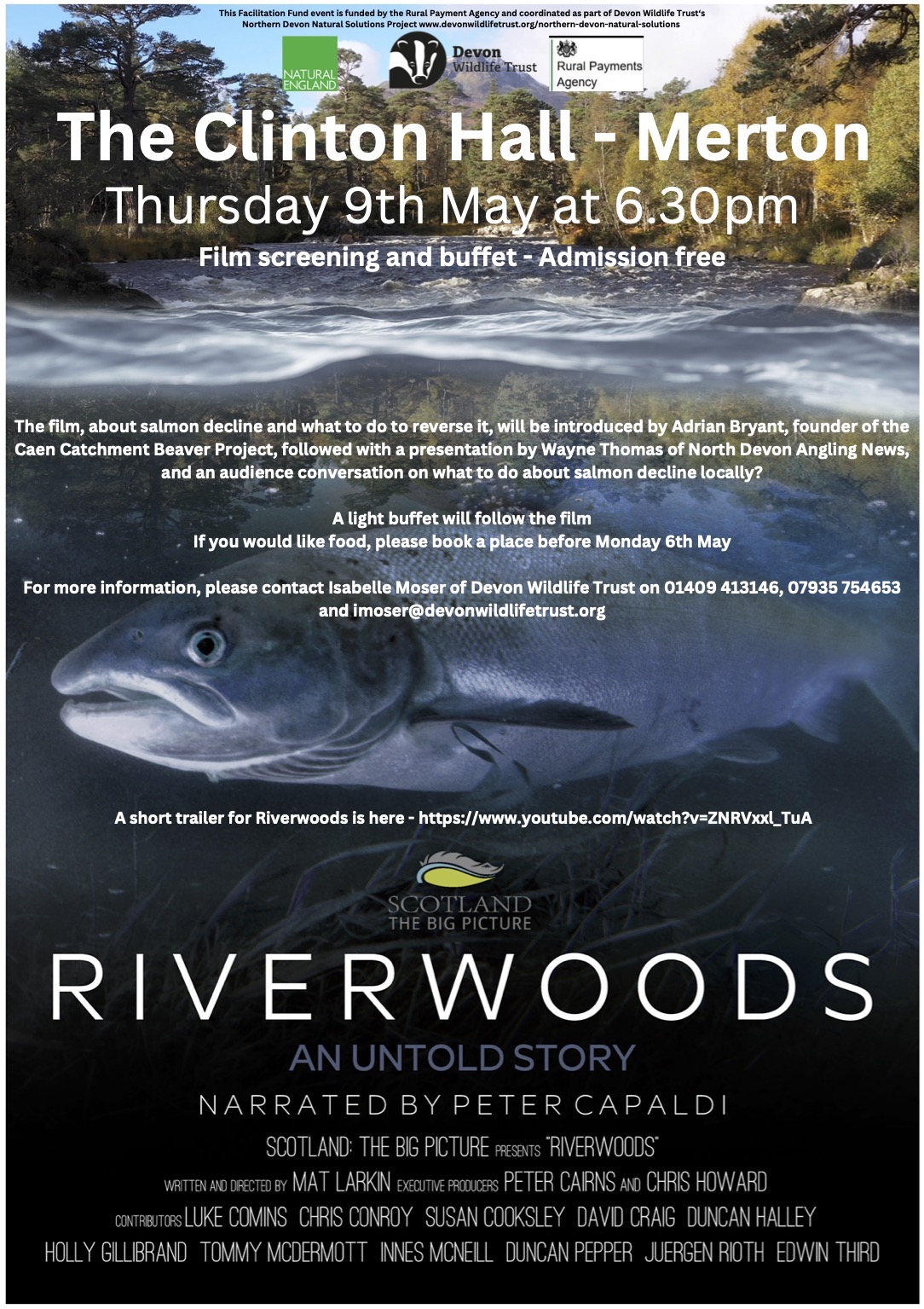
If you haven’t seen this superb film yet then there is an opportunity to see it at Clinton Hall – Merton

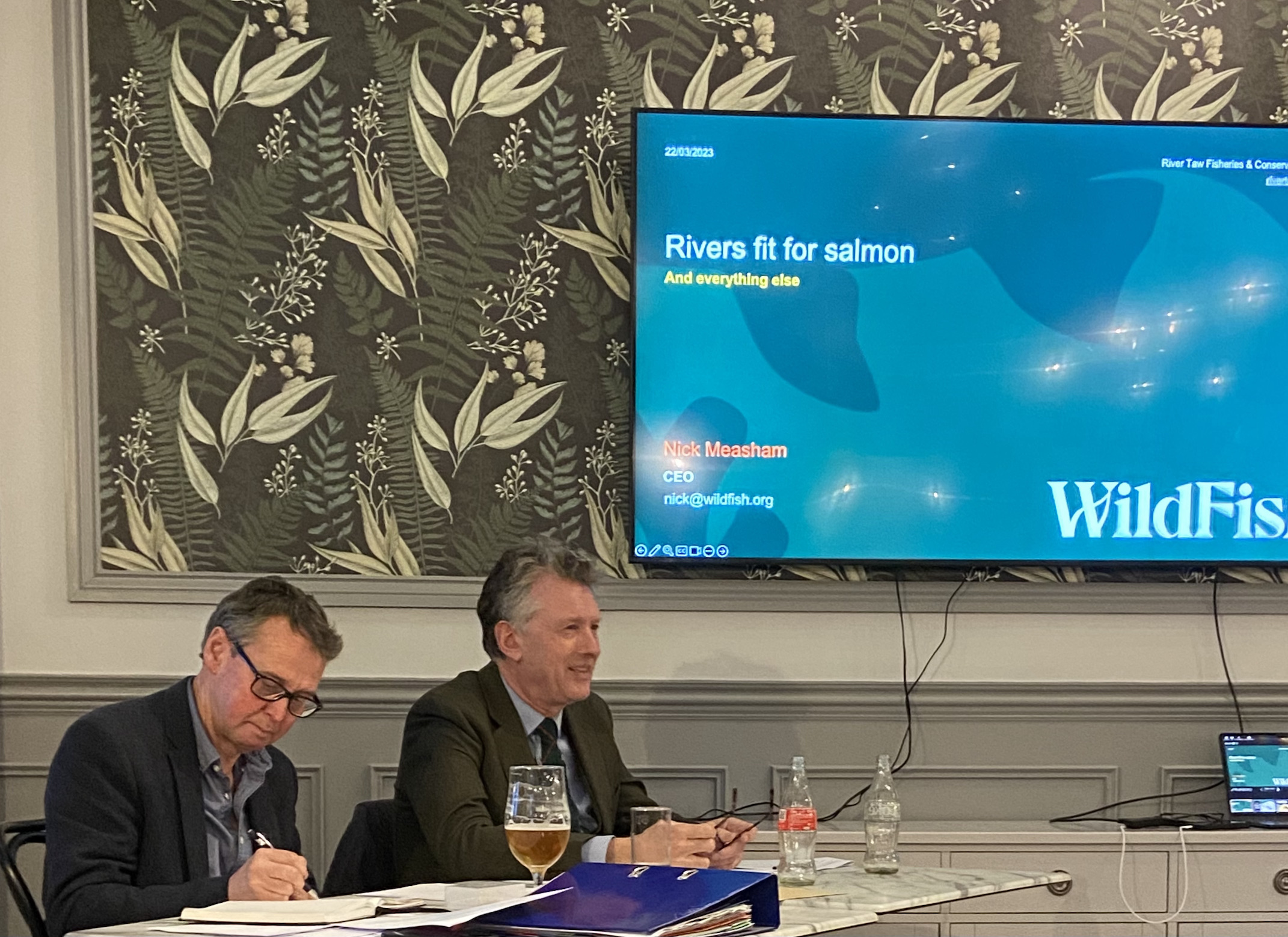
Members from across the region reflected upon a disappointing season in 2023 with catch returns indicating very poor results for both salmon and sea trout. Sixty salmon and around one hundred sea trout were caught throughout the river season. River flow had been low during the early spring and summer but had been good for the second half of the season. A good number of kelt’s caught at the start of the season gave some cause for optimism for future seasons. Redd counting during the winter had been difficult due to high flows.
Chairman Andy Gray delivered an outline plan for working closely with the North Devon Catchment Partnership to focus on improving water quality and habitat. This ambitious project aims to unite all who have an interest in the River Taw and its tributaries. Farmer clusters are now receiving payments to invest in environmentally beneficial projects and practices that will benefit the rivers. The Environment Agency are also focussing on agricultural issues with increased officers to both police and enforce regulations.
Measures to reduce flooding and slow the flow are being introduced on tributaries of the Taw investment in leaky dams and buffer zones.
The recent North Devon District Council meeting was discussed with a recognition that there is greater public awareness regarding sewage discharge incidents by South West Water.
An increasing run of shad into the river Taw each summer is a positive sign that the weir removal project partially funded by the RTFCA has benefitted the river.
Pete Tyjas introduced guest speaker Nick Measham CEO Wildfish. Nick delivered a passionate and enlightening talk and presentation about its work to protect wild fish. Nick highlighted the dramatic decline in salmon stocks estimated at close to 90% between 1970 and 2016. Nick highlighted the three essentials for salmon in our rivers. Clean water, enough water and no barriers. Pollution, over abstraction and barriers to migration are the key issues. Wildfish are working extremely hard to tackle all these issues with data monitoring via their smart rivers project, working to ensure compliance with existing regulations and campaigning to get farmed salmon off the table.
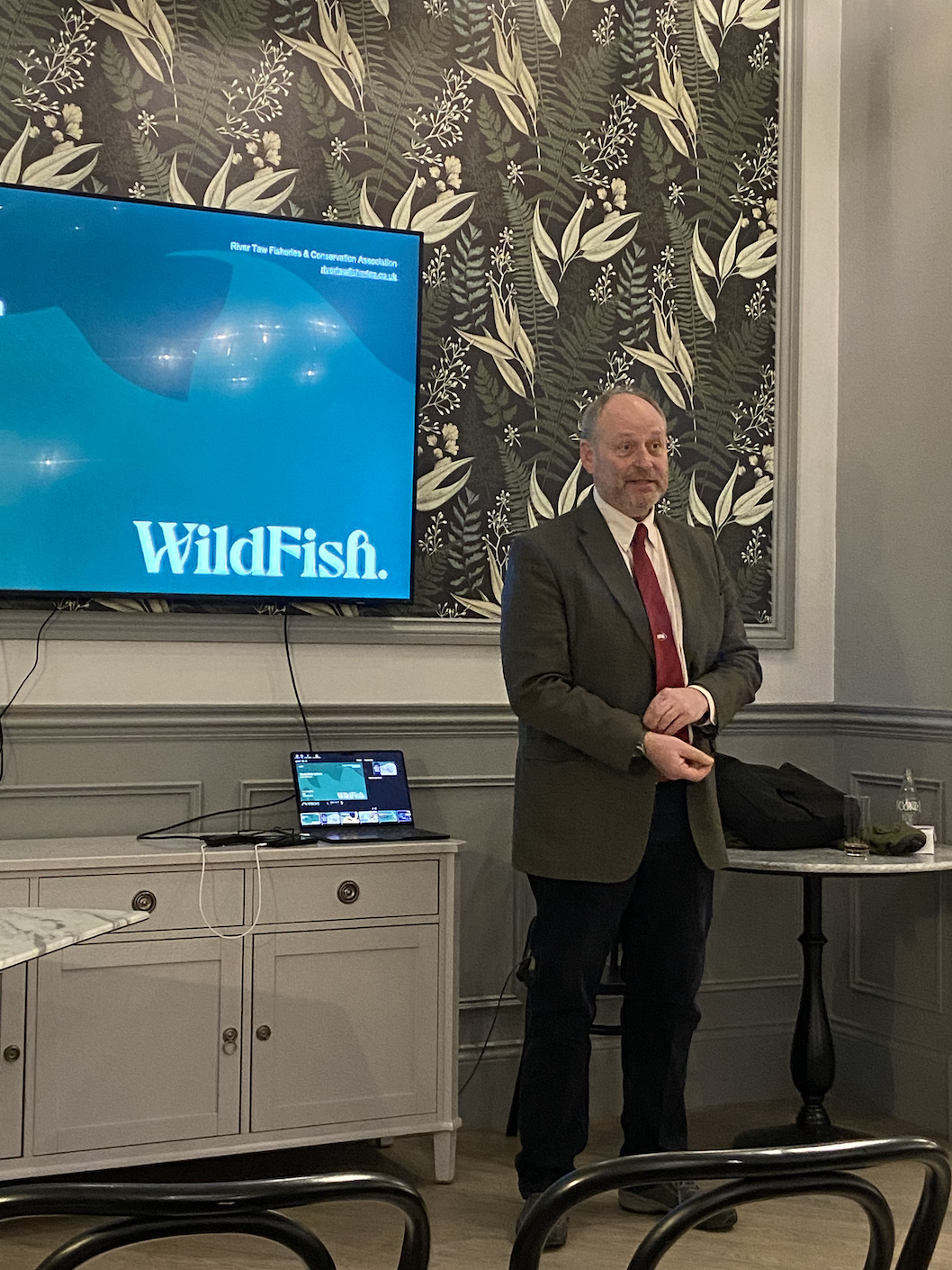
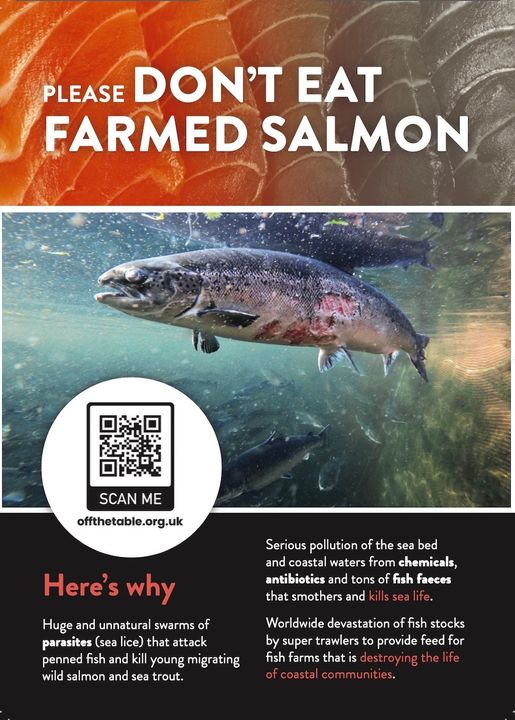

The talk was followed by the associations annual auction to raise valuable funds for river improvements. Discussion around the dinner tables after the meeting undoubtedly included debate on the preceding presentation and the prospects for the coming season.
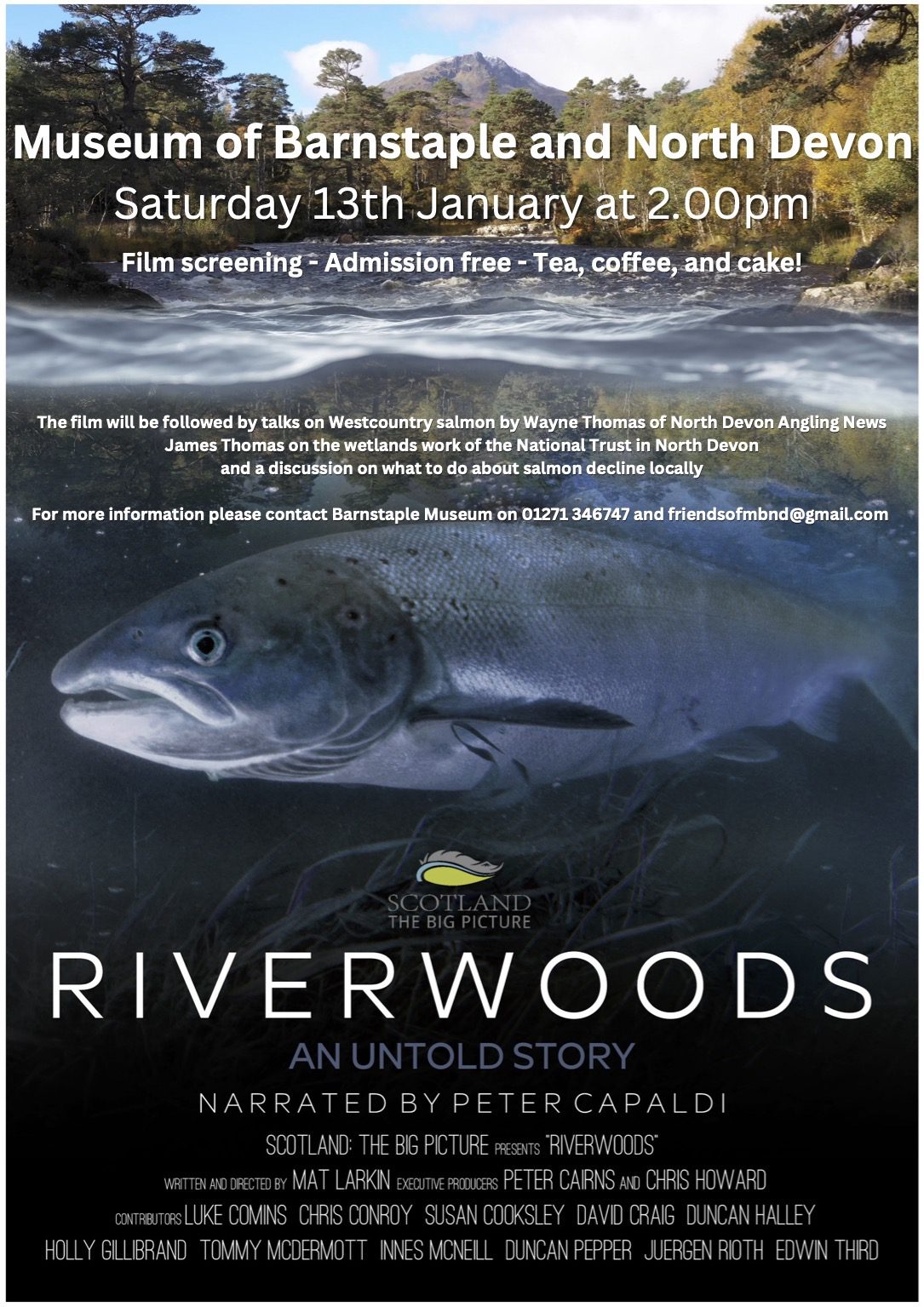
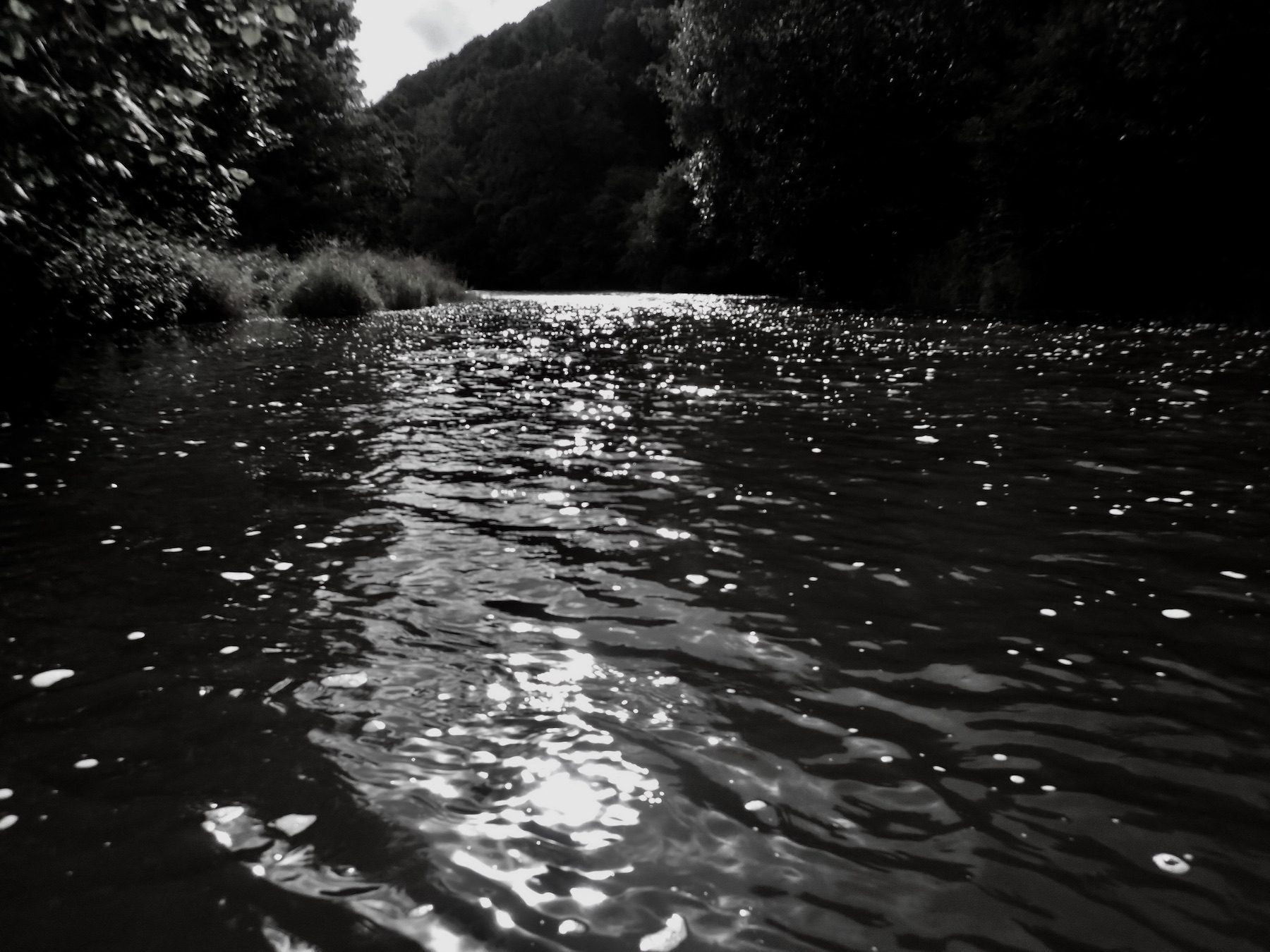
Data is vital in telling a story it’s not exciting, entertaining but it can be depressing and in the case of salmon and sea trout it’s a horror story. I caught my first salmon from the River East Lyn back in 1981 a year when 22,190 salmon were landed by rod and line anglers in England and Wales. Most of these fish were killed and taken for the table.
In 2022 the total rod catch for England and Wales was 6,388 of which 6.111 were returned. I doubt if 2023 will reveal any improvement in catches. The most alarming part of this is perhaps the steep decline in stocks since 2017 with catches plummeting from 13,571 to 6,388.
I am no mathematician and I know that data can be manipulated to some extent but this is stark.
To some extent the data is impacted upon by changing fishery regulations and fishing effort.
I am often asked what is the cause and I reply its complex.
An imbalanced eco system, Survival at sea, pollution, consequences of intensive farming, habitat loss, sewage, predation, poaching, salmon farming, overfishing, climate change, pollution, disease.
Beneath each heading there are many variables but I would hazard a guess, no lets google it. The world population in 1981 was 4,524,627,658 (around 4.5 Billion) it now stands at 8,045,311,447 ( just over 8 billion). So, the common denominator is likely to be a rapidly increasing population and an obsession with increasing GDP.
Where on the political agenda is the environment?
Salmon are of course just one iconic species that anglers take pleasure in catching but they are surely an indicator of a wider decline / collapse in the natural worlds eco systems. There is a growing awareness of nature’s decline as marvellous films like Planet Earth bring nature into our sitting rooms where we watch entertained as the splendour of the natural world is revealed and tales of its demise exposed in an unfolding horror story to surpass any Hammer Horror production.
As a young angler in 1981 I thought that salmon would always be present throughout my lifetime. If I am lucky enough to live another twenty years I could witness the extinction of these magnificent fish in UK waters.
“Don’t it always seem to go
That you don’t know what you’ve got ’till it’s gone”
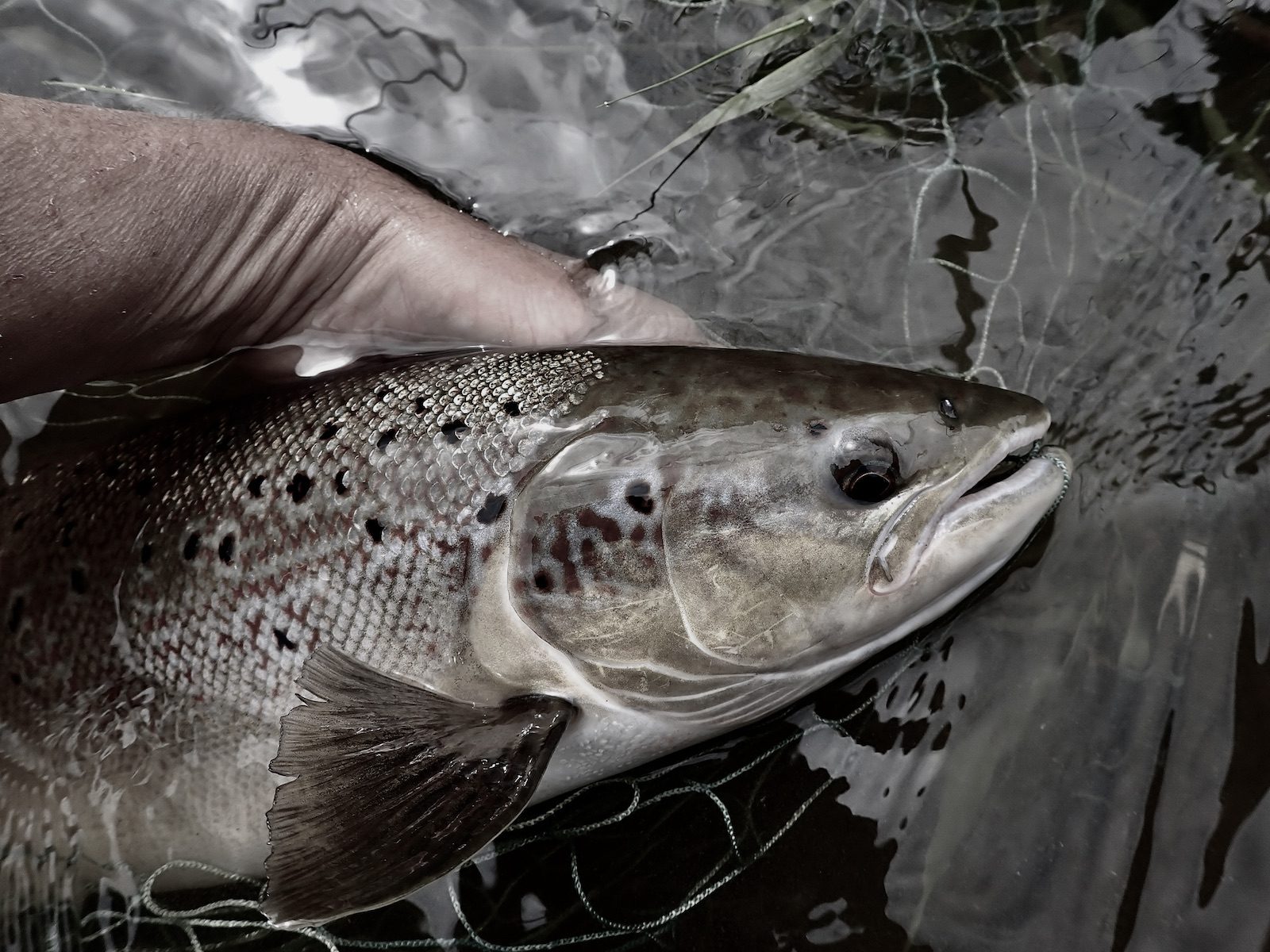
DATA MAKES FOR GRIM READING
Research and analysis
See Link Below
Salmonid and fisheries statistics for England and Wales 2022
Published 5 December 2023
Figure 1: Salmon stock status in England 2022
Risk value Number of rivers Percentage of total
Not at risk 1 2%
Probably not at risk 5 12%
Probably at risk 6 14%
At risk 30 71%
Is it too late? Maybe not for as nature and its demise climb up the political agenda there is a chance that those who care will do what needs to be done to address the many issues that impact upon salmon and the wider natural world. They say that where there is a will there is a way and there are some clever people out there and if given a chance nature is resilient and can recover.
BREAKING NEWS
| In the species reassessment released today by the IUCN Red List of Threatened Species, the main UK population of Atlantic salmon is reclassified as endangered – meaning they are threatened with extinction. Global populations are reclassified from least concern to near threatened.
Here in the UK, we are set to lose this incredible species before anyone else unless urgent action is taken. IUCN’s reassessment indicates that the mechanisms in place to protect Atlantic salmon are not working. The regulators responsible for their protection are failing both the species and the habitats on which they depend. The main threats to the UK populations of Atlantic salmon come as no surprise and include declining water quality, in-stream barriers, salmon farming, exploitation and climate change. In response to today’s announcement, our chief executive, Nick Measham, said this: “Thanks to the money raised by our supporters, we commissioned IUCN to reassess the status of Atlantic salmon stocks across the world. The outcome, although not unsurprising, is very grim. The UK population is in crisis thanks to our government’s and its regulators’ failures. We need the government to give our regulators the mandate and resources to act urgently to save our Atlantic salmon and their rivers”. |

https://www.justgiving.com/campaign/salmon-free-christmas
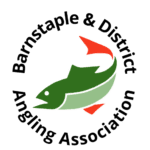

Another difficult year but it has had its moments , the Kelt run in March was spectacular ,all well repaired fish in the 6lb to 8lb range we had 14 reported in the first 2 days of the season before we asked for restraint and hope at least some make it back!! Also, Several good fish were caught during the year . I saw an old ghillie from the Tweed on TV recently explaining that salmon are called the fish of 10,000 casts .However we do actually have a new member who caught a salmon after just a couple of visits. This goes to show that Anything can happen at Newbridge but as ever “you have to be there”
A member sent an article from very first issue of Trout and Salmon in 1955 saying 100 fish were caught in the Taw Torridge tidal pools that year .They say it was a record and the result of restocking with Scottish fish a few years before. Food for thought.
We’ve had another year of low warm water ,leading to more angling restraint requested, the short spate in august brought a few fish up but the September spate was once again too late for us . Just as the fish started showing we had to stop.
Apart from Salmon ,Where are the sea trout? So, few have been reported even from traditionally prolific beats up river. It does seem that as the fish decline so does the fishing effort which doesn’t help with reported numbers.
We have good news ,as most are aware We have now finished the new club hut. This has been a huge effort by dedicated volunteers and the club are very grateful for it. It’s a lovely peaceful place to rest a while with a companion and watch the river pass by. We intend to have a formal opening on the first day of the season next year and Members will be notified nearer the time. Also, John and Hayden Kenyon led a working party for the installation of steps and a ladder to improve access to the railway swirl pit, now called the Chairman’s steps .They have our thanks for that.
You may not be aware but Earlier in the season our local wildlife trained police officer Lucy Robinson and our local EA bailiff Sam Fenner had a person excluded from our water due to antisocial behaviour connected to Elver poaching. This isn’t an easy process that included a difficult “home visit “and We are very grateful to them for this action. It’s good we have this level of support from our local enforcement officers. They always do as much as they can for us but they are under so many constraints and can only do what they are resourced for. The EA bailiff Sam Fenner also got involved with the cattle encroachment from just above the bridge .After a meeting The estate has now replaced the fencing and that is ongoing. The West Country rivers trust has installed water quality monitors just upriver from us and we’re all interested in any reports from that. Another item of interest is that Adi’s wife ,Caroline Podesta ,is in the citizen scientist project and takes monthly water samples at the bridge ,it all helps to keep the pressure up on abuse of the rivers and the genie is firmly out of the bottle in regard to that. Who does what about it is another matter though! We can but support any campaign we come across . We generally have a negative attitude to these agencies but mostly the people on the ground are on the same page as us and as frustrated as us when it comes to any deployment of resources. Please be patient with them if you have any personal contact, we have to support them too as they are doing their individual best under a lot of pressure .We are encouraged to call in incidents/events at least it will get logged.
As a club We always doing our best to protect and improve The Newbridge beat we’re but always happy for any suggestions. Very exciting news is the club is finalising the purchase of another beat further up river. All details regarding fees and access will be forwarded to all members ,hopefully in time for the coming season.
Club cups were awarded at the recent AGM and this year the committee cup went to Dave Winter for his efforts at Newbridge, Paul Meredith gets the most salmon cup for his 3 good fish, Chay Boggis gets the Bass on the fly cup for his lovely 7lb fish from Clovelly, and I was lucky enough to get the best Salmon 34inches estimated at 13.5lb.
Don Hearn
Newbridge river keeper
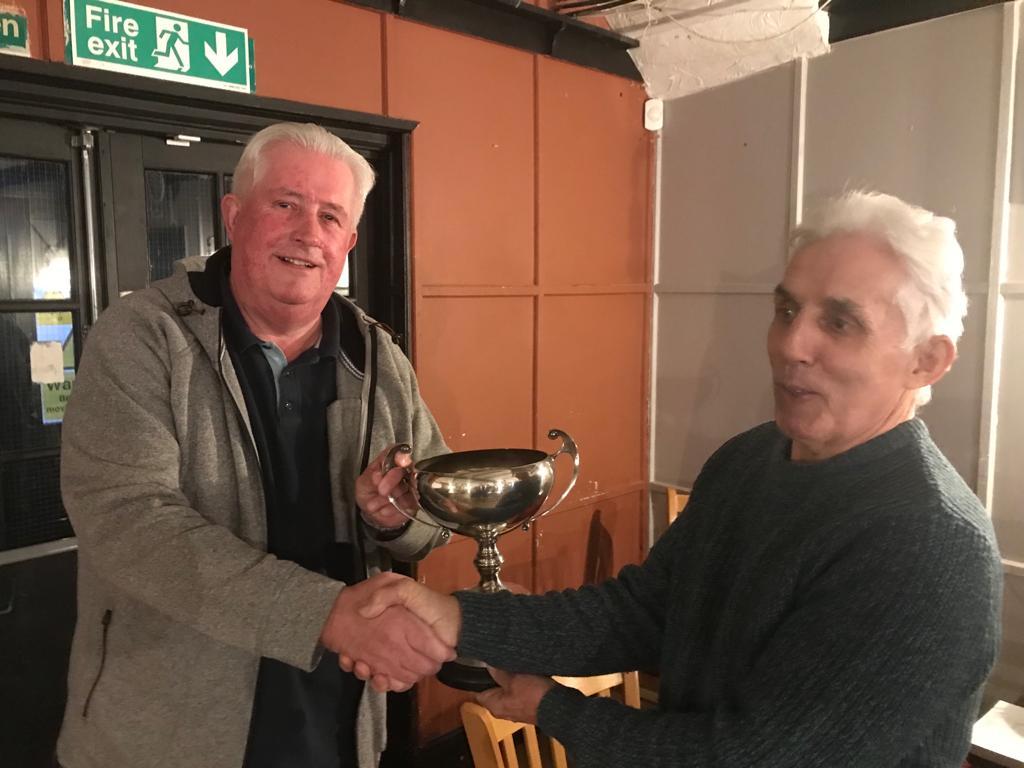
Hey Mr Dream-Seller, tell me how’s it gonna be. Are the Salmon running? Are there fish you can see? Have you, as the song says, dreams enough to spare?
Comes the answer: ‘Fish are moving and the river’s looking great – and it should hold well for the whole of your week’. All of which sounds very promising. But buyer beware; we hear what we want to hear and nowhere do these words say there are more than a handful of salmon in the river.
The language of guiding has always been creative and bendy, but as the Salmon and Steelhead runs diminish this inventiveness is being tested. Telling anglers what they want to hear without promising the impossible is an art form, although it helps that no audience was ever more willingly misled than we fishing junkies. There is nothing we want to hear more than that we’re arriving at a river full of fish.
Back in the real world, far from any river, deceiving clients is easier. The clerk on the airline check-in desk (if you can still find one) has always promised that your seat has extra legroom and your baggage has been checked all the way through. This is done with impunity because by the time you find out that your seat is in the loo and your baggage in Bahrain, you are a continent away. On a river your guide must sell you a dream that holds you enthralled for the duration of the trip. You’re both in it together and, for added frisson, there’s that tip at the end.
The scale of this challenge cannot be understated. At one of England’s salmon fisheries, a famous hotel, the total salmon catch last year was 1. That’s right: One salmon. Imagine being a guide with that to deal with.
So, let’s go fishing: We’ve arrived. It’s our big week and our hopes are high. The anxious first question we ask is “How’s the fishing?”.
‘Hey!’ the guide smiles broadly. ‘Great to meet you. The river’s in fine condition and we’re gonna have a really good time’. Our pulse quickens in anticipation of the thrills to come. It’s going to be an awesome week!
Later, after all the pleasantries are done, the bags unpacked and the tackle checked, there will be a more serious word in your ear: “The river’s looking terrific and the water levels couldn’t be better, but – I’ll be straight with you – the salmon are running a little late this year”. This should set your alarm bells ringing. The phrase used to mean that the February salmon had arrived in April, presumably in an act of contrarian defiance against the early arrival of spring. Nowadays this trend is taking a desperate turn and the truth would sound something like this: “We don’t know where the fish are. In recent years the redds have been a hot tub, the sea nets are longer and finer, the fish farm’s doubled in size and the town sewage works pumps raw effluent to match the farm slurry.” Apex predators vary from country to country but you can be sure they’re also in trouble. The entire ecosystem is in decline.
Against this fishless backdrop of warm and perhaps excremental water (try fishing in England or Wales) our hapless guide or gillie must keep our spirits up for a whole week. And that takes a very special sort of talent.
If I create the impression that I’m singling out guides and gillies as the reality-benders, it’s because I am. And I have a great deal of sympathy for their plight because, if I were your guide, I’d do the same.
It’s not the guide’s fault. He or she is a decent human being with a job to do and bills to pay. But the unvarnished truth can be brutal and visitors who believe there are fish to catch are easier company than those whose hopes have been dashed before a fly is cast. There’s also a trade-off in this: As less time is spent catching fish so more must go into managing the client. This is compounded by the human weariness that sets in as a dud week unfolds.
Meanwhile, back at our accommodation, the new day is here and it’s time to hit the river. The guide’s rules are simple: Keep smiling and remember that the lack of action can’t be blamed on the visitor, no matter how badly they fish. And no self-respecting guide could ever say it’s down to poor guiding. So, if we can’t blame the angler or the guide and we’ve already agreed the river is looking great, what does that leave? We can’t, at this early stage in the week, blame the fish because the illusion of their presence is why we’re here. In defiance of reality, we must travel hopefully.
For once the world is on the guide’s side. The ubiquitous Global Fishing Mega-Corp has fragmented fishing tackle into so many interchangeable and marketable parts that I doubt anyone has yet explored all the mind-numbing combinations that can now connect a reel to a fly. Mostly they just connect Mega-Corp with your bank account.
Changing tackle combinations looks like rational problem-solving and keeps the client optimistic. For a single Skagit line there can be some 28 mow-tip variations (perhaps doubling by the time you read this) one or two of which might even be appropriate. Thankfully there are cheaper alternatives. Then there’s the leader and, if time drags, we can learn some new knots. And if that doesn’t work there’s always a Scandi or a Spey or just a good old-fashioned WF line on a single-handed rod. Or a single-handed Spey line. How long have you got? (Answer: A week).
Top of this list is the fly, the interminable way to fill time. This works because most people cling to the belief that there is a right fly to deploy right now. So devoting effort to choosing a winning fly seems crucial, even though experience suggests that successful fly selection mostly works only in hindsight. And, of course, all the time you’re making these changes the fly is on the bank. Which is a lot less disappointing than having it in the water.
I was once with a Steelhead guide whose fly wallet was stuffed entirely with bright pink flies. He carried no other colour. From this fanfare of explosive and uniform pinkness he selected a single fly that he thought would catch fish. How it differed from the rest I could not tell, but I was smitten by the concept. You can have any colour you want, provided it’s pink. And it worked. No time was wasted tying knots and 4 Steelhead were caught (there were fish in the river).
So the next time I’m with some austere gillie on a drear Scottish river I’ll have the perfect response when he asks to see my flies. What he wants to say to me is: ‘If only you had a Dour Dreich-Black Doomster Fly you might have been in with a chance. With that lot, all shiny black + a hint of silver thread, nay chance.” I’m going summon up all my courage and flash a wonderland of effervescing pink and then hope it works.
But back to our river: As the fishless week progresses the guide will see our mood disintegrate. Hope flees and life loses all meaning. We persevere because we must. Admitting defeat is not an option.
This is when I get hit with The Great Euphemism of Last Resort – an intervention reserved exclusively for the fishless angler on suicide watch. I’ve heard it on both sides of the Atlantic and it’s the moment when guide euphemisms morph into lies. And it really annoys me, not for the lie, but because I willfully fall for it every time.
The week has reached the point where small mistakes multiply into big ones and my patience with myself is running thin. I just hope the guide is with my fishing partner and not watching my dire performance. My casting is falling apart. And then, suddenly and with a big smile, up pops the guide, as cheerful as a cheerful thing can be … ‘Hey, you’re looking great! There’s nothing wrong with your casting and you’re covering the water really well’.
The effect on me is electric. Oh WOW! A real, live pro-fisherman or woman has just told me my casting is faultless. I’m really good at this! It’s going on my gravestone as proof of a life well-lived: Here Lies Richard – Oh Boy Could He Cast! Confidence is restored, my casting recovers and I’m poised to strike when the inevitable fish takes. Life is great.
But only for a while, because reality is corrosive and this praise is not what it seems. It always comes at that moment when even a passing stranger can see that I need a bottle of wine, a whole cake and a long afternoon nap. It’s an undeniable, self-evident fact that I’m casting very, very badly. And yet I fall for it every time – hook, line and sinker.
Let’s take a step back and look at this dispassionately: The guide said ‘There’s nothing wrong with your casting’. They didn’t say anything much was right with it either. What this says is that my casting’s sort of OK. ‘Sort of OK?’. ‘Yup, it could be worse’. And if I then take another step back this is what the thought bubble over the guide’s head says: ‘What can I say? You’re getting the line out. That’s OK. But a fishless week combined with a lifetime of accumulated bad habits is taking its toll. Even if a fish shows up, the best you’ll do is give it a slapping. It’s day 6 and I’ve run out of ideas.’
Thankfully most guides are much too canny to say anything of the sort.
So that’s it. The week’s heading for a dud, the guide has played their last card and the guest is wilting. Everyone is ready to go home.
This is now happening on too many rivers and to too many people. We all know the reasons – climate change, pollution, commercial exploitation, land use, fish farming, overheated oceans and so on. As a result, guiding is becoming less about catching fish and more about providing emotional support for wilfully gullible clients. The times they are a’changing.
Inevitably, as migratory runs continue their decline, I’ll be falling for The Great Euphemism of Last Resort more often. And, much to my surprise, I really don’t mind. I’ve realised that if I’m out on the water, rod in hand, then the two sweetest little lies you can tell me are that the river is full of fish and that my casting is great. So, please, hit me with it one more time. And sometimes, every once in a while, it will be true: my casting will find that sweet spot and a fish will oblige.
But until that happens, please don’t stop: Tell me lies, tell me sweet little lies.
— — — —
The River Torridge Fishery Association
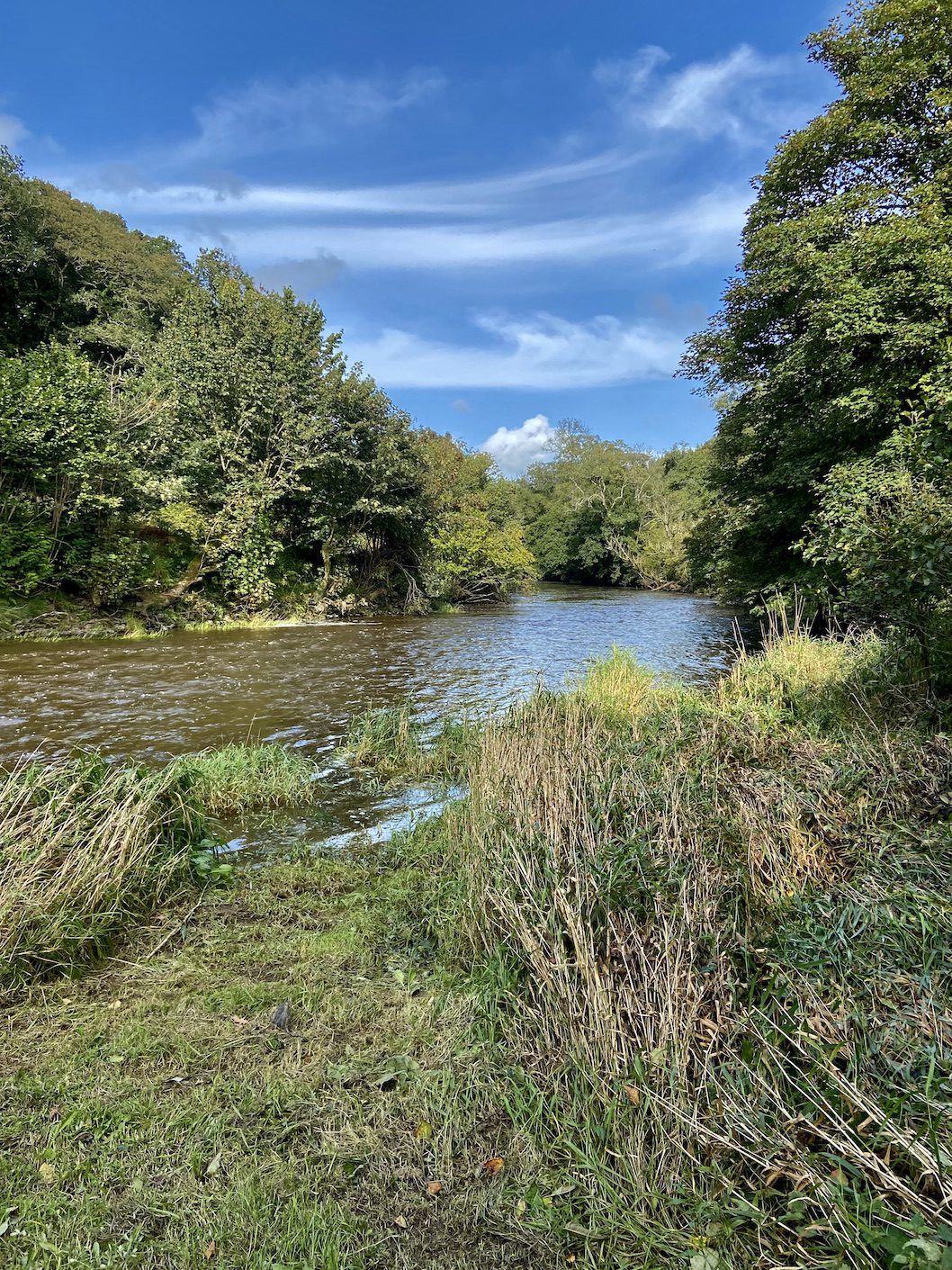
President: Lord Clinton
Chairman: Paul Ashworth Secretary: Charles Inniss
The Salmon Hatchery
At long last I have some good news: the EA has given the go ahead for us to run the hatchery again this autumn/winter. The hatchery team have had to attend a health/safety course and we have had to purchase a hoist and harness in case of difficulties netting the broodstock in 18 inches of water!! A working party has tidied the hatchery site and cleaned the holding tanks. All being well we will be trapping the broodstock in early/mid-November. Once the eggs have been stripped and fertilised, 10,000 will be sent to the Colliford hatchery with the remainder being. looked after at our Monkokehampton hatchery.
Our Fishery Enforcement Officer
More good news: a new fishery officer for North Devon has now been appointed. Sam Fenner is very keen to support the Torridge in particular the hatchery project.
Over 40 members and guests enjoyed a convivial evening with good company and an excellent meal. We were delighted that our newly appointed Fishery Officer, Sam Fenner, was able to join us and meet several of our members.
Thank you all for supporting the raffle so generously which made a net profit of £1,225.
The prize winners of the raffle:
£100 Orvis Voucher: Nigel Case
Voucher for 12 bottles of wine: a friend of Graham Henderson
£50 Half Moon Voucher: Trevor Glover
We cannot complain about a lack of water this year. After a dry hot June the remainder of the season was characterised by changeable weather with regular spells of heavy rain. The runs of both salmon and sea trout were again disappointing. Salmon and sea trout moved quickly upstream and most of the fish were caught on middle river beats. The lack of fishing effort (and I was as guilty as anyone) possibly meant that the rod catch did not truly reflect the number of fish in the river. Three salmon were caught in the last two days of the season, including an absolutely fresh fish of 7lb from Madeira. There was some good brown trout fishing in May and June. There is increasing evidence that the trout are feeding on the baby signal crayfish, which have now infested the whole catchment, resulting in several fish up to 3lb being caught.
Following on from successful screenings of the excellant film Riverwoods at Loxhore and Kings Nympton a new showing is to held at East Worlington Parish Hall. The after film discussion is well worth taking part in to highlight the message of both decline of salmon and wildlife.
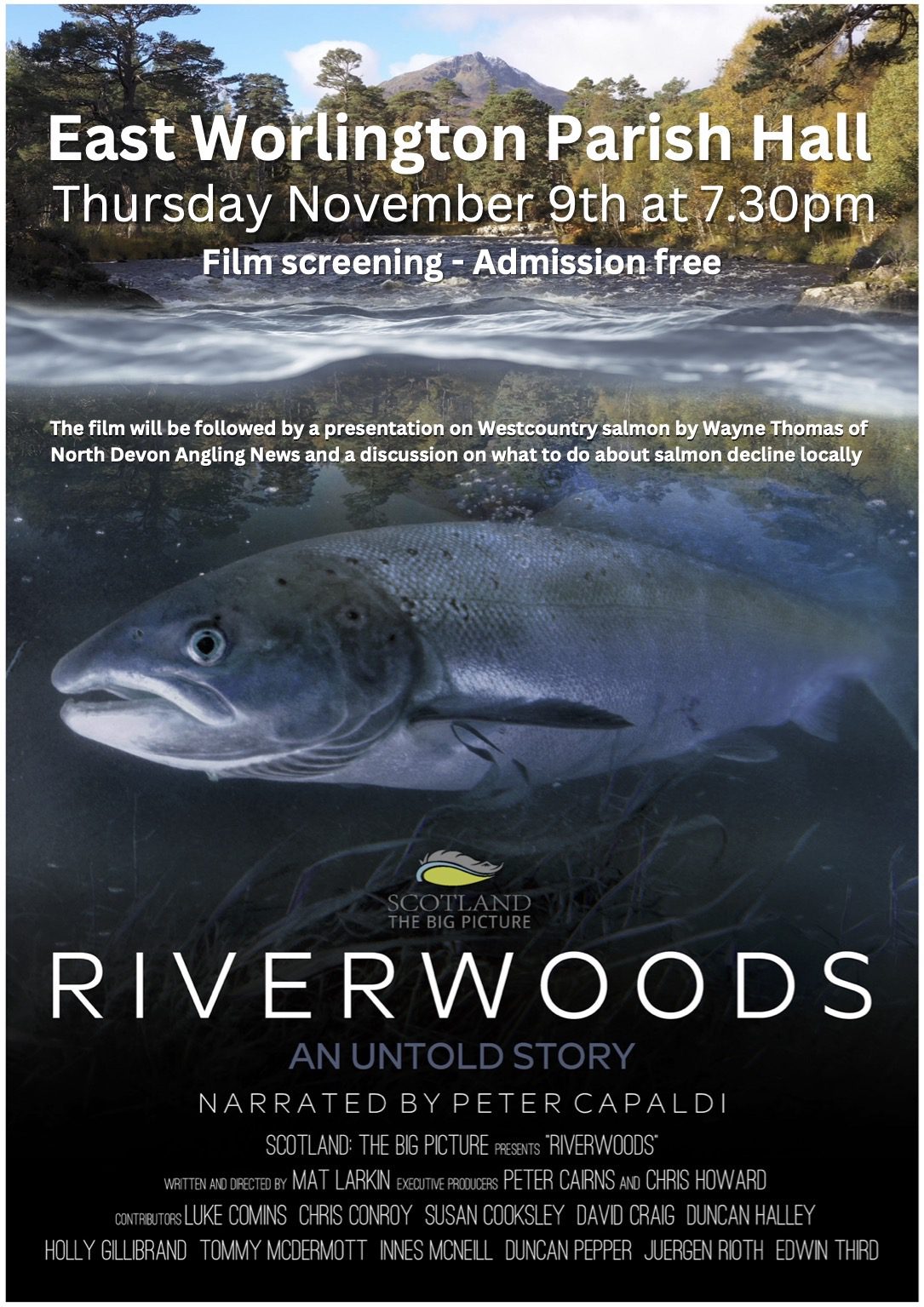
I have started writing a few features on the new countryside writing platform scribehound. Please see link below to latest article.
https://www.scribehound.com/lifestyle/s/fishing/gone-in-a-lifetime
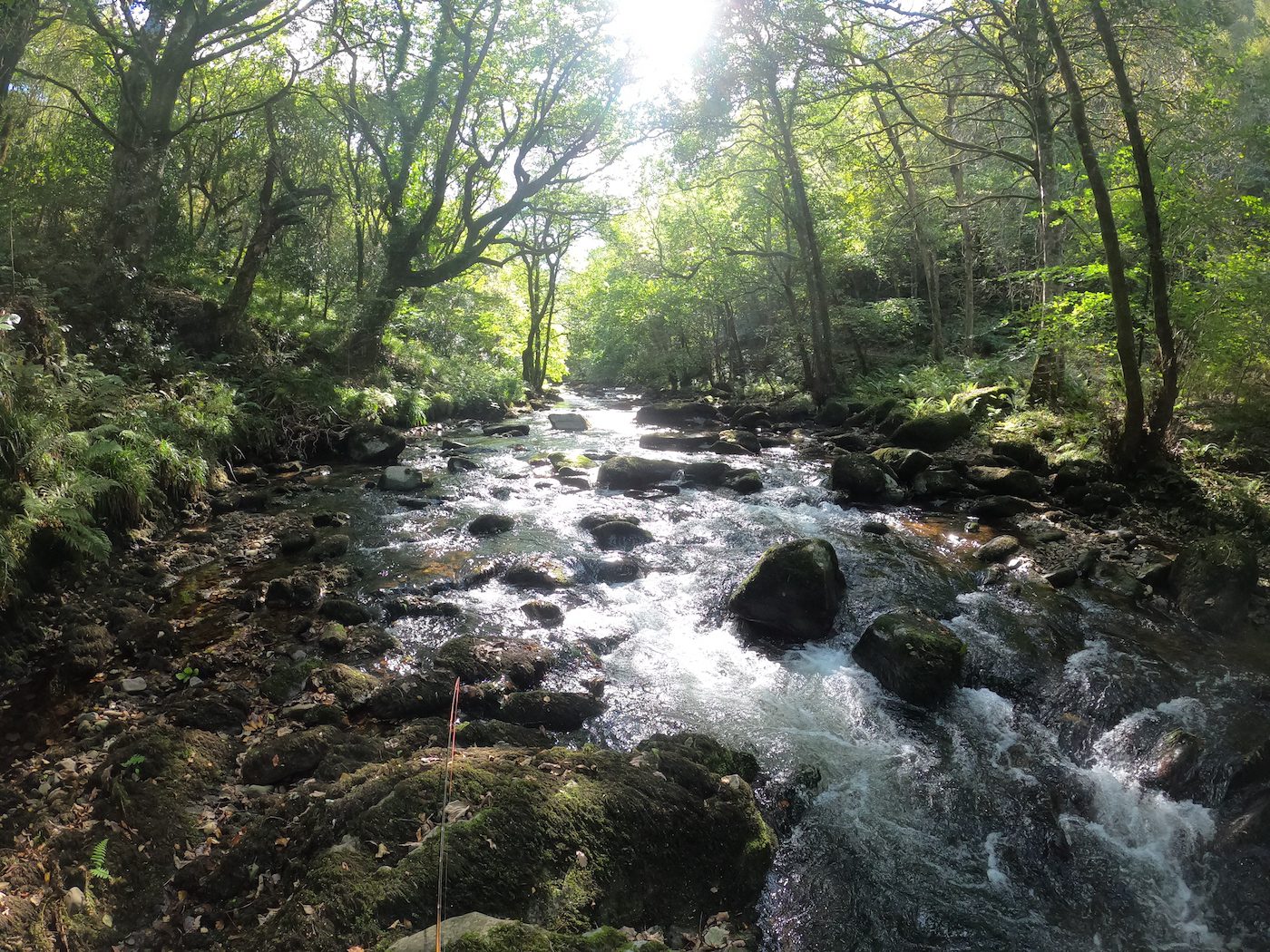
I will also be delivering a short talk after the Riverwoods film at Kings Nympton on Friday October 20th.